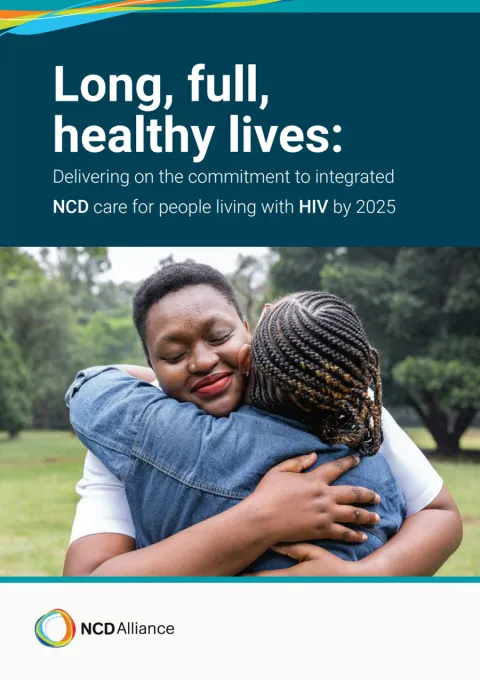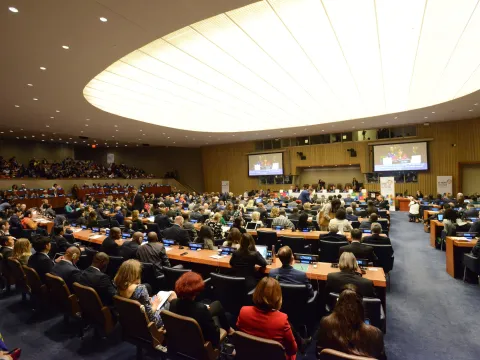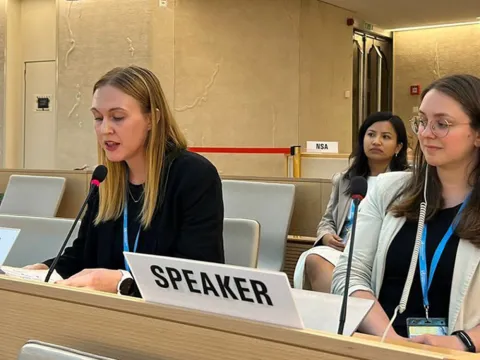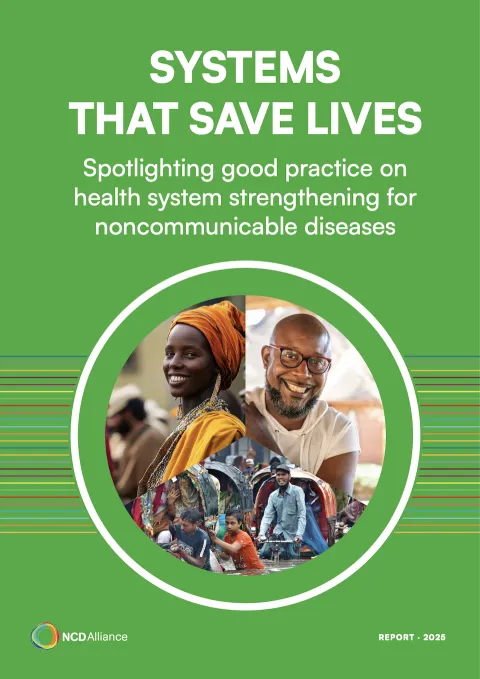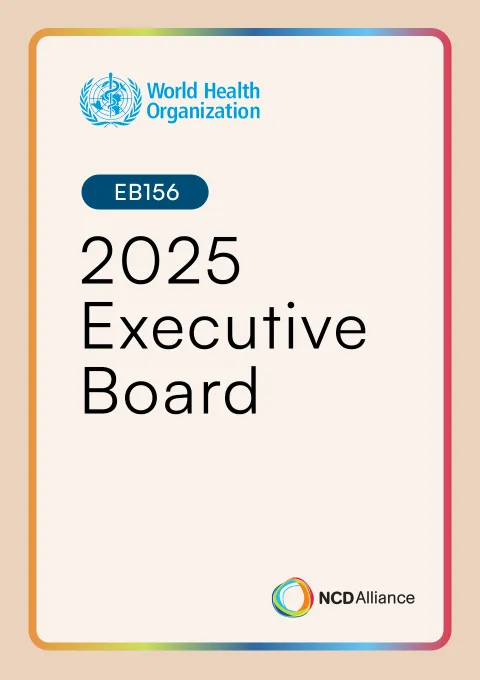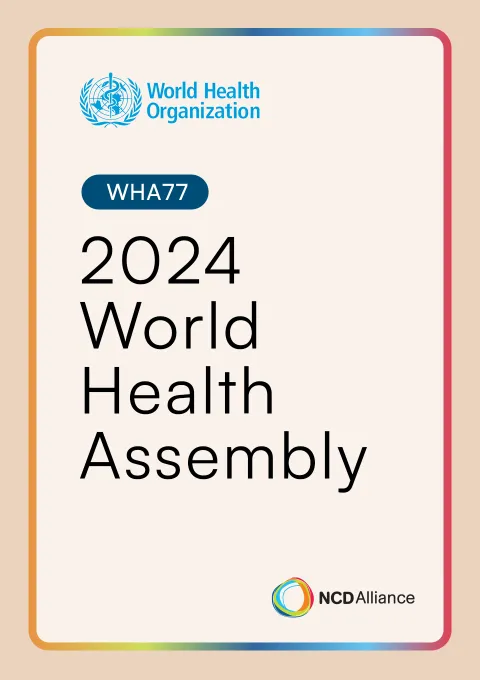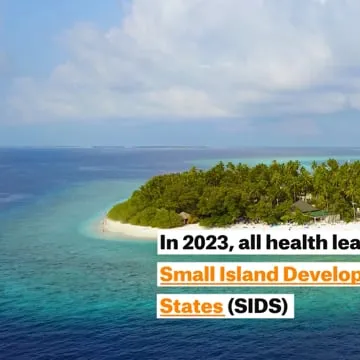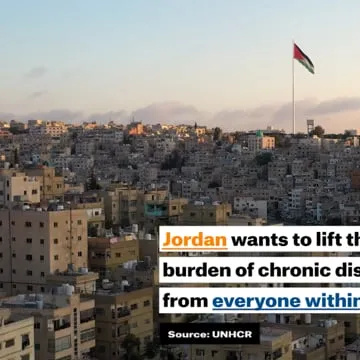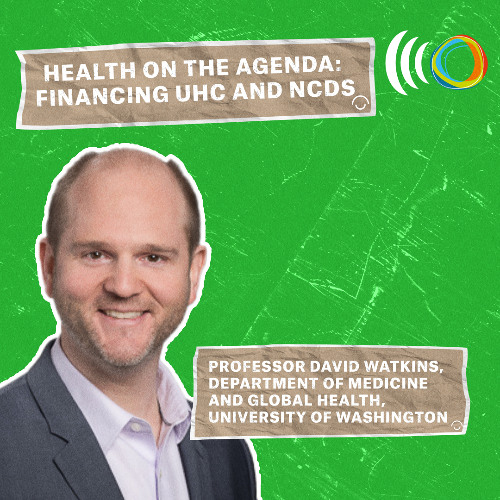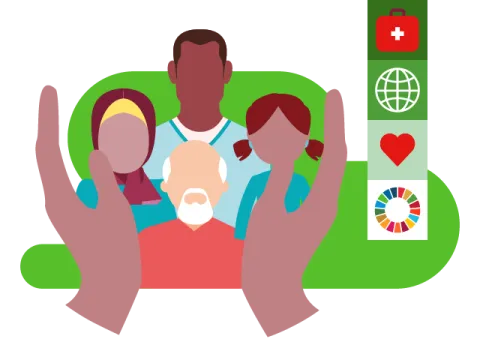Integrating NCDs in the HIV response to protect decades of progress
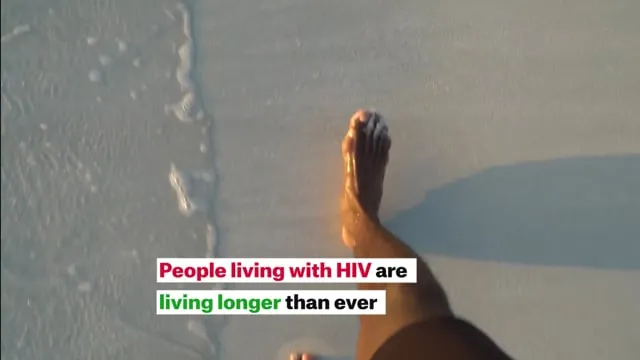
Key Messages
- People living with HIV now live longer than ever but they are often at higher risk of NCDs, especially in low- and middle-income countries (LMICs).
- It has been projected that 71 % of people living with HIV will be living with one or more NCD, versus 56 % of adults without HIV.
- There are four main NCD co-morbidities related to HIV: cardiovascular disease (CVD), depression, diabetes and cancer.
- Integrating NCDs in the HIV response not only provides better health outcomes for people living with HIV and NCDs but it is also cost-effective.
- In 2021 UN member states committed to ensure 90 per cent of people living with HIV will have access to people-centred integrated services in line with the principles of Universal Health Coverage (UHC).
- Some LMICs are making considerable progress in this direction. It is important to learn from their success to accelerate action.
- Treating people, not specific diseases, should be the cornerstone of NCD-HIV integration, as well as the driving principle to achieve health for all.
NCDs: the weak spot of the HIV response
The story of the HIV response is one of success. Most people living with HIV are now living longer thanks to improvemenst in access to antiretroviral treatment (ART), including in low- and middle-income countries (LMICs). What used to be a death sentence has become a manageable chronic disease for many.
The cruel irony of these hard-worn gains is that people living with HIV are often at higher risk of developing co-morbidities with noncommunicable diseases (NCDs). In some countries like Kenya, more than half of people living with HIV are also living with NCDs, not only because they are living into old age but also because their health status makes them more vulnerable to some NCDs.
It is expected that 71% of people living with HIV will be living with one or more NCDs by 2035, in comparison with 56% of adults without the virus. This is especially true for LMICs, where the burden of NCDs is growing more rapidly due to limitations in the access to prevention, treatment and care and the increased exposure to NCD risk factors such as tobacco, alcohol, junk food and air pollution.
There are four main NCD co-morbidities related to HIV: cardiovascular disease (CVD), depression, diabetes and cancer. A combination of factors, including the virus itself and its medication (ART), makes people living with HIV nearly twice as likely to develop CVD. It is also estimated that one in three people living with HIV experience depression. Finally, people living with HIV are at a higher risk of type 2 Diabetes and some cancers. In the case of women living with HIV, the risk of cervical cancer increases by six-fold.
Integrating NCDs and HIV pays off
Crossovers between NCDs and HIV make a strong case for care integration and a transition towards a people-centred approach in line with the principles of Universal Health Coverage (UHC). Well-established HIV programmes provide a solid platform from which to respond to the growing burden of NCDs among people living with HIV.
Fragmentation is the major barrier for people living with HIV in need of health care for NCDs. Having a one-stop shop for HIV and NCD services allows patients to save time and transportation costs, thereby improving their access and adherence to treatment and care as well as the affordability of services. While the cost of treatment for HIV has been progressively lowered by international negotiations and global health funding, NCD care remains comparatively expensive, especially for patients in LMICs. The role of NCDs in delaying, and potentially rolling back, decades of progress on HIV makes it imperative to reverse this situation.
From a health system perspective, integrated programmes have proven to be cost-effective when compared to standalone services, mostly because sharing resources across multiple diseases leads to more efficient use of healthcare workers and capital investments, such as facilities and equipment. This is because HIV and NCD care share many similarities in their screening, diagnosis, treatment, and management, including regular and ongoing appointment attendance, adherence to medications, testing requirements, self-management of medications and healthy behaviours, and community engagement.
Integrating NCD-related interventions such as nutrition assessment, dietary counselling and support, smoking cessation, exercise promotion, blood pressure monitoring and – when available – cholesterol management as part of HIV care can help not only to reduce the risks of NCDs among people living with HIV, but also to improve HIV treatment outcomes.
Global commitments and local progress on HIV-NCD integration: towards UHC
In 2021 global leaders committed to ensure 90% of people living with HIV will have access to people-centred integrated services, including for NCD and mental health care by 2025. UNAIDS, The Global Fund to Fight AIDS, Tuberculosis and Malaria and PEFAR all recognise and prioritise integration in their strategies and fundraising efforts.
For example, UNAIDS is supporting countries to mobilise domestic and donor resources for integrating HIV and cervical cancer prevention and care in countries with a high burden of HIV and cervical cancer.
This has translated to some movement on the ground but nowhere near enough.
Despite not having a comprehensive HIV and NCD integration policy, some LMICs are making significant advancements in this direction. It is important to learn from these success stories so they can be replicated to accelerate action around the world. For instance, in Malawi, integrated cervical cancer and HIV screening was established as a national programme in 2007. In Kenya, people living with HIV receive routine screening for diabetes. Others like Vietnam have integrated a pilot screening for mental health into HIV services, whereas Kenya, Nigeria and Zambia have been delivering integrated CVD and HIV pilot services since 2012.
The meaningful involvement of people living with both HIV and NCDs is crucial to break the artificial siloes between HIV and NCDs and to make further progress towards the full realisation of Universal Health Coverage (UHC). Centring health services around people rather than single diseases means putting affected people and communities at the very heart of the response. This should be the cornerstone of NCD-HIV integration, as well as the driving principle to achieve health for all.
